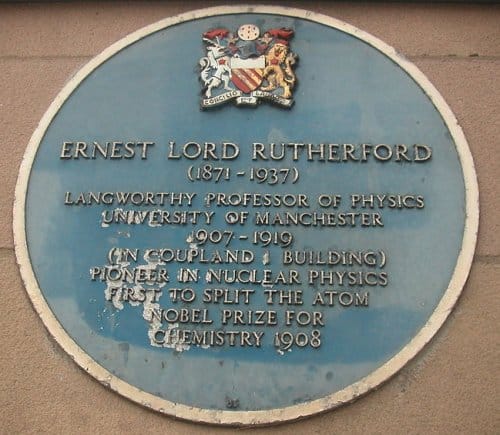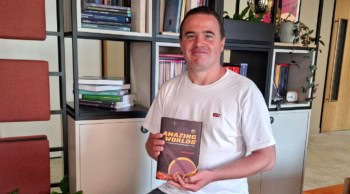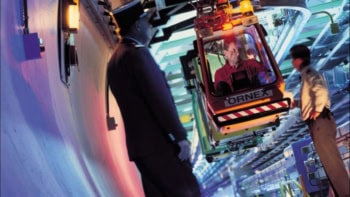
By Hamish Johnston
Did the leftovers from experiments done by Ernest Rutherford and others contribute to the deaths of two University of Manchester academics nearly a century later?
That’s the question facing Manchester coroner Nigel Meadows, who will lead an inquest into the deaths of Arthur Reader and Tom Whiston, who both died of pancreatic cancer in 2008 and 2009 respectively.
Rutherford arrived at the University of Manchester in 1907 and spent the next 12 years experimenting with radioactive materials as well as toxic substances such as mercury. It was there that he established the existence of the atomic nucleus.
Rutherford’s lab was in the New Physical Laboratories (renamed several times before it became the Rutherford building in 2006), which continued to be used by the physics department until the late 1960s. The psychology department moved there in 1972 — but staff only discovered that something was wrong in 2001 when several rooms were sealed off because of radiation and mercury contamination.
In 2008, three psychologists and longtime occupants of the building published a 294-page report entitled Possible health risks due to ionising radiation in the Rutherford Building.
In their report, John Churcher, Don O’Boyle and Neil Todd conclude:
“There remains significant uncertainty concerning the extent to which radioactive
contamination of the Coupland 1/Rutherford building may have affected the health of
staff of the Department of Psychology who occupied part of it during the 25 years to
1999 and the health of others who occupied it earlier.
However, in 2009 the epidemiologist David Coggon of Southampton University tabled an independent report that concluded the deaths (as well as the health problems of several other occupants) were probably not linked to the contamination. You can read Coggon’s report here.
It will be interesting to see how the coroner’s findings compare to previous investigations.



